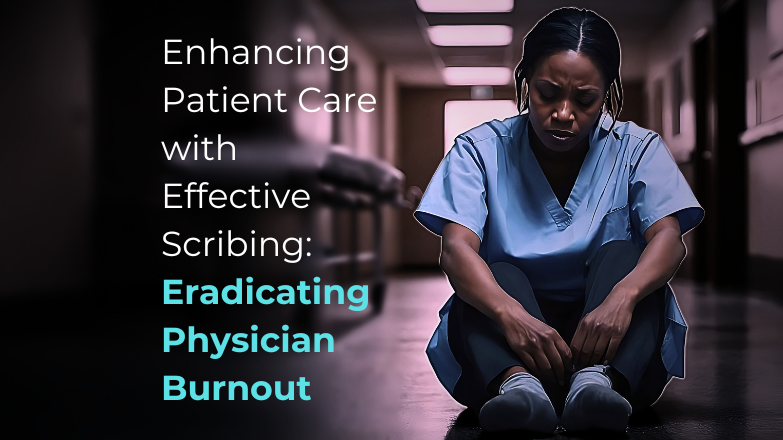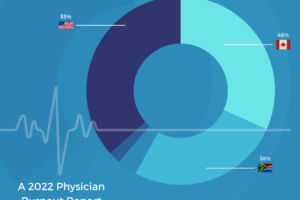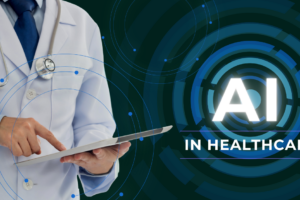Enhancing Patient Care with Effective Scribing: Eradicating Physician Burnout

Enhancing Patient Care with Effective Scribing: Eradicating Physician Burnout
In today’s fast-paced healthcare environment, providing exceptional patient care is more critical than ever. However, physicians often face overwhelming workloads, making it challenging to maintain high standards of care and thorough documentation. This is where effective scribing in healthcare comes into play. Medical scribes assist healthcare providers by handling administrative tasks and ensuring accurate documentation, thereby freeing up physicians to focus on patient interactions. As the demand for medical scribes and technology-assisted scribing solutions grows, it becomes essential to understand how these roles can significantly improve patient care.
Understanding Medical Scribing
1.1 What is Medical Scribing?
Medical scribing involves the documentation of patient encounters in real-time, performed by trained professionals known as medical scribes. A medical scribe’s primary responsibilities include recording patient histories, documenting clinical findings, and updating electronic health records (EHRs). By doing so, scribes enable healthcare providers to concentrate on clinical care rather than administrative tasks, ensuring that every aspect of a patient’s visit is accurately recorded.
1.2 The Evolution of Scribing in Healthcare
Historically, scribes have been a part of healthcare for centuries, with their roles evolving significantly over time. In ancient times, scribes were primarily responsible for recording medical texts and patient histories on papyrus or parchment. As medical documentation needs grew, the role of scribes expanded, eventually leading to the integration of digital technologies in healthcare. Today, the use of electronic health records has transformed medical scribing, enabling faster, more accurate documentation and allowing for advanced data analysis and patient care.
Benefits of Effective Scribing for Patient Care
2.1 Reducing Physician Burnout
One of the most significant benefits of effective scribing is its ability to reduce physician burnout. Physicians are often overwhelmed by administrative duties, leading to long hours and increased stress. By offloading the responsibility of documentation to scribes, healthcare providers can significantly reduce their workload. This not only improves work-life balance but also enhances the quality of care delivered, as physicians can devote more time and attention to patient needs.
2.2 Enhancing Patient-Physician Interaction
Effective scribing also plays a crucial role in enhancing patient-physician interactions. When physicians are not preoccupied with note-taking, they can engage more fully with their patients, listening attentively and addressing their concerns. This improved communication fosters a better understanding of patient conditions and leads to more accurate diagnoses and treatment plans. For instance, in a case study from a busy urban hospital, the introduction of medical scribes led to a noticeable increase in patient satisfaction scores, as patients felt more heard and understood.
2.3 Improving Accuracy and Documentation Quality
Accurate and timely documentation is vital for effective patient care. Medical scribes ensure that all relevant information is captured during patient visits, including symptoms, diagnosis, and treatment plans. This comprehensive documentation is essential for continuity of care, providing a detailed record for future reference. Furthermore, accurate records help prevent medical errors, streamline billing processes, and facilitate compliance with healthcare regulations. In many cases, the involvement of scribes has led to a reduction in documentation errors and an improvement in the overall quality of patient records.
Implementing Scribing Solutions in Healthcare
3.1 Choosing Between Human Scribes and AI-Powered Solutions
Healthcare providers can choose between human scribes and AI-powered transcription tools, depending on their specific needs. Human scribes offer the advantage of adaptability and can provide personalized support tailored to a physician’s workflow. They are particularly beneficial in complex cases where nuanced understanding and discretion are required. On the other hand, AI-powered scribing solutions offer consistency, speed, and cost-effectiveness. They can quickly transcribe large volumes of data and are continuously improving with advancements in natural language processing technologies. The choice between these options depends on factors such as budget, the complexity of cases, and the desired level of interaction between the scribe and healthcare provider. However, as in the case of dorascribe.ai, discretion and overall privacy policy are topmost, and dorascribe.ai is fully HIPPA compliant.
3.2 Training and Integrating Scribes into Healthcare Teams
To maximize the benefits of medical scribes, proper training, and integration into healthcare teams are essential. Scribe training programs typically cover medical terminology, clinical workflows, and the use of EHR systems. Additionally, scribes must be trained in maintaining patient confidentiality and adhering to healthcare regulations. Best practices for integrating scribes include establishing clear communication channels, defining roles and responsibilities, and providing ongoing support and feedback. Successful integration leads to smoother workflows, improved documentation quality, and enhanced patient care.
4.1 Real-Life Examples of Scribing Impact
Numerous healthcare institutions have successfully implemented medical scribing programs, with an overwhelming number of them transitioning from regular manual scribing to AI-powered transcription applications such as dorascribe.ai, resulting in measurable improvements in patient care. According to a study reported by the American Council on Science and Health, performed at the University of Wisconsin, a 26.8% decrease in burnout experience was recorded by 70.3% of physicians who had assigned scribes, while that of those without scribes rose from 50% to 60.3% over the study period. This is only one of such studies repeatedly carried out around the world.
Such success stories underscore the transformative impact of effective scribing on healthcare delivery.
Frequently Asked Questions (FAQs)
Q1: What qualifications are required to become a medical scribe?
To become a medical scribe, candidates typically need a high school diploma and some post-secondary education in healthcare-related fields. Many employers also require certification through scribe training programs that cover medical terminology, documentation standards, and EHR systems.
Q2: How do medical scribes ensure patient confidentiality?
Medical scribes are trained to adhere to strict confidentiality protocols, including compliance with the Health Insurance Portability and Accountability Act (HIPAA). They are responsible for safeguarding patient information and ensuring that all documentation is handled securely.
Q3: What is the cost-benefit analysis of hiring medical scribes?
The cost of hiring medical scribes can vary, but the benefits often outweigh the expenses. Scribes can reduce physician workload, improve documentation accuracy, and enhance patient satisfaction, leading to potential increases in revenue and overall efficiency.
Q4: Can AI scribing solutions fully replace human scribes?
While AI scribing solutions offer many advantages, they may not fully replace human scribes in all scenarios. Human scribes provide a level of personalization and discretion that AI may not yet achieve, especially in complex clinical situations. However, AI tools continue to evolve and improve, making them a viable option for many healthcare settings.
Conclusion: The Future of Patient Care with Effective AI-Powered Transcription
As the healthcare industry continues to evolve, the role of medical scribes will become increasingly important. Whether through human scribes or AI-powered solutions, effective scribing can transform patient care by improving documentation quality, reducing physician burnout, and enhancing patient-physician interactions. Healthcare providers should explore the various scribing solutions and consider implementing them to improve their practice and deliver better patient outcomes.
To learn more about how scribing can benefit your healthcare practice, explore our AI-powered medical transcription solutions and take advantage of the best fit for your needs. Share your experiences with scribing in the comments section below and join the conversation on improving patient care.







